Vitamin B12 Beef 3 Oz Vs Cheerios
Top 10 Foods Highest in Vitamin B12 (Cobalamin)

Powered by USDA Nutrition Data
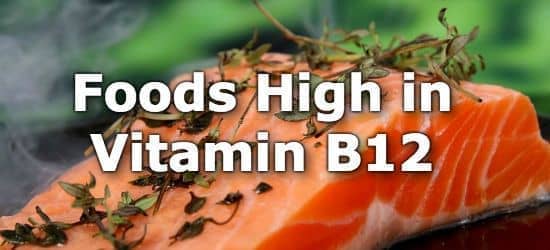
Vitamin B12, or Cobalamin, is necessary for making DNA and for creating energy in our cells. (1) A deficiency of vitamin B12 leads to anemia, fatigue, mania, and depression. A long-term deficiency can cause permanent damage to the brain and central nervous system. (2)
Vitamin B12 is created by bacteria and can only be found naturally in animal products, (1) however, synthetic forms are widely available and added to many foods such as packaged cereals.
Vitamin B12 can be consumed in large doses since excess B12 is stored in the liver for use when supplies are scarce. Stores of B12 can last for several years, which is why it takes a long time before people realize they have a deficiency in their diet. (1)
High vitamin B12 foods include clams, fish, crab, low-fat beef, fortified cereal, fortified soymilk, fortified tofu, low-fat dairy, cheese, and eggs. (3) The daily value (DV) for vitamin B12 is 2.4μg per day, which has been recently reduced from 6μg per the USDA food labeling standards. (4) For this reason, the percentage of the daily value (%DV) may appear lower on outdated product labels.
Below are the top 10 foods highest in vitamin B12, click here for an extended list of vitamin B12 rich foods, and here for other foods high in vitamin B.
If you are vegetarian, see the article on vegetarian sources of vitamin B12.
- Introduction
- List of Foods High in Vitamin B12
- Printable
- B12 by Nutrient Density
- More B12 Rich Foods
- Sources of Vegan and Vegetarian B12
- B12 Daily Requirements
- Vitamin B12 Deficiency
- Sublingual B12 or B12 Injections?
- Health Benefits
- More Vitamin B Foods
- About the Daily Value (%DV) Target
- About the Data
- Nutrient Ranking Tool
- Related
- Feedback
- References

#1: Clams
| Vitamin B12 per 3oz Serving | Vitamin B12 per 100g | Vitamin B12 per 200 Calories |
|---|---|---|
| 84.1μg (3502% DV) | 98.9μg (4120% DV) | 133.6μg (5568% DV) |

#2: Tuna
| Vitamin B12 per 6oz Fillet | Vitamin B12 per 100g | Vitamin B12 per 200 Calories |
|---|---|---|
| 18.5μg (771% DV) | 10.9μg (453% DV) | 11.8μg (493% DV) |
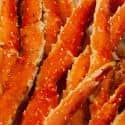
#3: King Crab
| Vitamin B12 in 1 Crab Leg | Vitamin B12 per 100g | Vitamin B12 per 200 Calories |
|---|---|---|
| 15.4μg (642% DV) | 11.5μg (479% DV) | 23.7μg (988% DV) |

#4: Beef (Skirt Steak)
| Vitamin B12 per 6oz Steak | Vitamin B12 per 100g | Vitamin B12 per 200 Calories |
|---|---|---|
| 12.8μg (533% DV) | 7.5μg (314% DV) | 5.6μg (234% DV) |

#5: Fortified Cereals
| Vitamin B12 per 3/4 Cup | Vitamin B12 per 100g | Vitamin B12 per 200 Calories |
|---|---|---|
| 6.1μg (254% DV) | 21μg (875% DV) | 12.8μg (535% DV) |
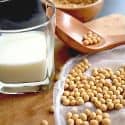
#6: Fortified Soymilk
| Vitamin B12 per 16oz Glass | Vitamin B12 per 100g | Vitamin B12 per 200 Calories |
|---|---|---|
| 6μg (249% DV) | 1.2μg (51% DV) | 7.5μg (311% DV) |

#7: Fortified Tofu
| Vitamin B12 per Cup | Vitamin B12 per 100g | Vitamin B12 per 200 Calories |
|---|---|---|
| 3.3μg (137% DV) | 1.5μg (60% DV) | 3.2μg (131% DV) |

#8: Low-Fat Milk
| Vitamin B12 per 16oz Glass | Vitamin B12 per 100g | Vitamin B12 per 200 Calories |
|---|---|---|
| 2.6μg (108% DV) | 0.5μg (22% DV) | 2.1μg (88% DV) |

#9: Swiss Cheese
| Vitamin B12 per Oz | Vitamin B12 per 100g | Vitamin B12 per 200 Calories |
|---|---|---|
| 0.9μg (36% DV) | 3.1μg (128% DV) | 1.6μg (65% DV) |

#10: Eggs
| Vitamin B12 in 1 Large Egg | Vitamin B12 per 100g | Vitamin B12 per 200 Calories |
|---|---|---|
| 0.6μg (23% DV) | 1.1μg (46% DV) | 1.4μg (60% DV) |
See All 200 Foods High in Vitamin B12
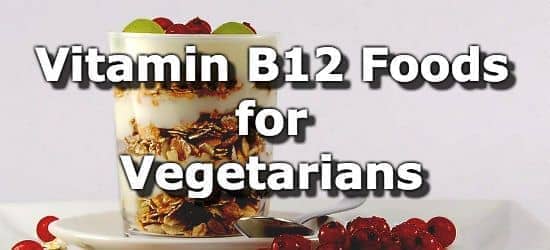 Next ➞
Next ➞
Printable One Page Sheet
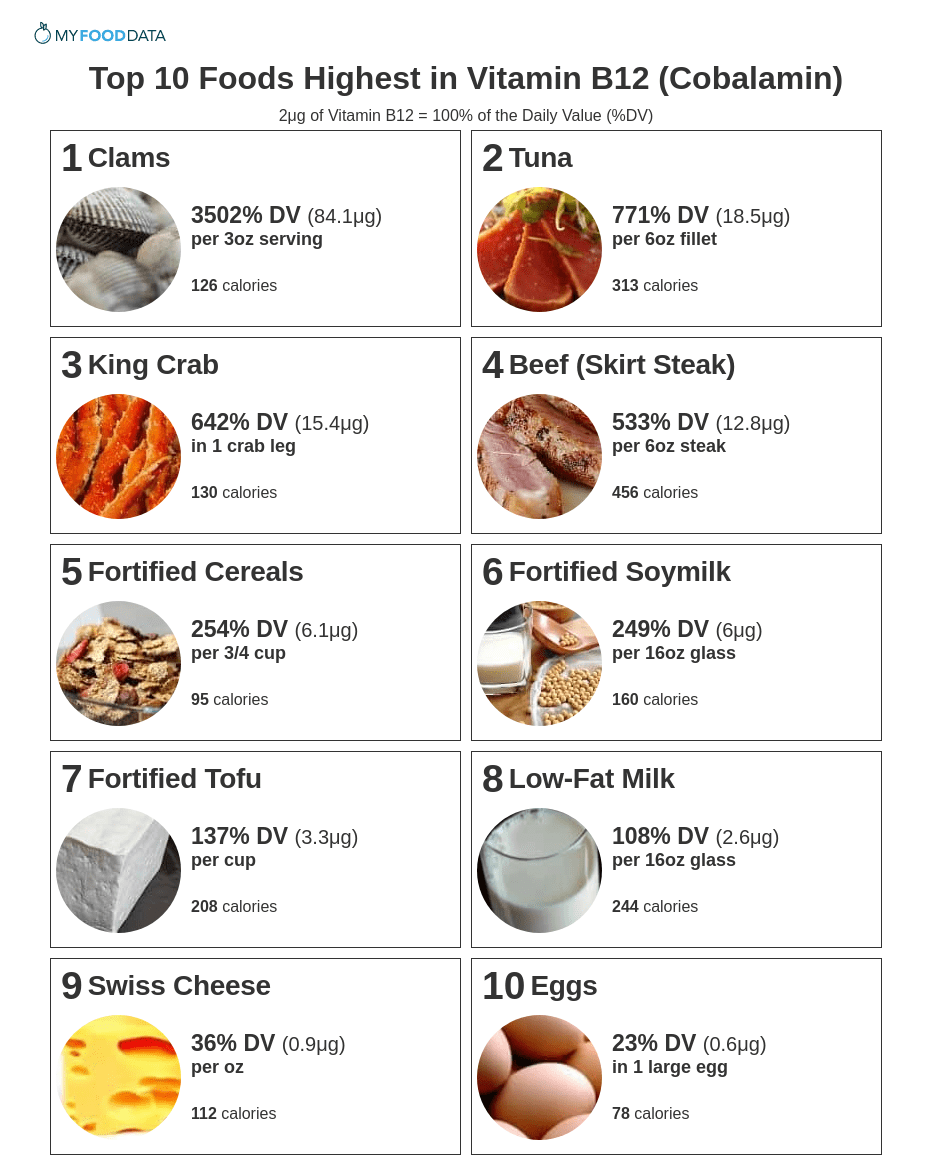
High Vitamin B12 Foods by Nutrient Density (Vitamin B12 per Gram)
Other Vitamin B12 Rich Foods
Sources of Vegan and Vegetarian B12
Vitamin B12 is naturally found in animal foods (meat, cheese, fish, milk, eggs). See our article on vegetarian vitamin B12 sources to find both natural vegetarian foods (milk and eggs), and fortified b12 foods (soymilk, tofu, vitamin water).
How much Vitamin B12 do You Need?
The recommended daily allowance (RDA) for Vitamin B12 ranges from 0.4 to 2.8μg per day. The daily value for vitamin B12 is 2.4μg per day, which has been recently reduced from 6μg per the USDA food labeling standards.
| Age | Male | Female |
| 0-6 months* | 0.4 μg | 0.4 μg |
| 7-12 months* | 0.5 μg | 0.5 μg |
| 1-3 years | 0.9 μg | 0.9 μg |
| 4-8 years | 1.2 μg | 1.2 μg |
| 9-13 years | 1.8 μg | 1.8 μg |
| 14+ years | 2.4 μg | 2.4 μg |
Pregnant women require 2.6μg, and lactating women should consume at least 2.8μg of vitamin B12.
*The amounts for children less than 12 months old is the adequate intake (AI) not RDA.
Source: Office of Dietary Supplements.
People at Risk of a Vitamin B12 Deficiency
- Older Adults with Atrophic Gastritis - Atrophic Gastritis is a condition affecting 30-50% of adults over age 50 and hampers their ability to absorb vitamin B12 from natural foods. Supplements are recommended for people in this group. (2)
- People with Pernicious Anemia - A condition that affects 1-2% of adults and can only effectively be treated with vitamin B12 injections or shots. (2)
- Vegans and Vegetarians - Vitamin B12 is naturally found in animal products, however there are some natural vegetarian foods high in vitamin B12. (2)
- Pregnant and Lactating Women who are Vegetarian or Vegan (2)
- People taking Certain Medications (2)
- Proton pump inhibitors, such as omeprazole (Prilosec) and lansoprazole (Prevacid), which are used to treat gastric or pepetic ulcer disease can inhibit absorption of vitamin B12.
- Metformin - often used for type II diabetes, Metformin may interfere with vitamin B12 absorption in certain people.
- Histamine antagonists, such as cimetidine (Tagamet), famotidine (Pepcid), and ranitidine (Zantac), used to treat peptic ulcer disease, can reduce absorption of vitamin B12 by slowing the release of hydrochloric acid into the stomach.
- Bacteriostatic Antibiotics, like Chloramphenicol (Chloromycetin), can interfere with the red blood cell response to vitamin B12 supplements.
- Anticonvulsants - Anticonvulsants have been shown to interfere with vitamin B12 and vitamin B9 (Folate) metabolism. One study found that people taking folate supplements and anticonvulsants experienced a 50% decline in Vitamin B12 blood levels.
Sublingual B12 or B12 Injections?
Both oral supplements and sublingual lozenges have equal absorption of vitamin B12. Due to Intrinsic Factor only a small percentage of vitamin B12 from supplements is absorbed. For example, just 10μg out of a 500μg dose of vitamin B12. For this reason, doctors may suggest B12 shots or injections, which will directly be absorbed and incorporated into the human body. (2)
An intranasal vitamin B12 gel also exists as a way to boost vitamin B12 levels. Talk to your doctor or primary care provider about this method, if you prefer it over injections. (5)
Vitamin B12 is added to foods as cyanocobalamin or methylcobalamin. Evidence suggests that either form is equally bioavailable and digestible. (2)
Health Benefits of Vitamin B12
- Protection Against Heart Disease - Adequate levels of vitamins B12, B6, and B9 have been shown to lower levels of a protein in the blood: homocysteine. Lower levels of homocysteine have been shown to improve endothelial function, which in turn may boost cardiovascular health and decrease risk of heart attacks. (2)
- Protect and Repair DNA to Reduce Cancer Risk and Slow Aging - Absorption of vitamin b12 and Folate (B9) is essential for DNA metabolism and maintenance, which may reduce the risk of cancer and slow down aging. (4)
- Protect Against Dementia and Cognitive Decline - Lack of vitamin B12 increases homocysteine levels, which in turn decreases the body's ability to metabolize neurotransmitters. Due to limitations with creating long-term controlled studies in human populations, no definite link between increased vitamin B12 levels and cognitive function has been found, however, several observational studies suggest increased homocysteine levels increase the incidence of Alzheimer's disease and dementia, and low levels of vitamin B12 have been associated with cognitive decline. (2)
- Alzheimer's Protection - One study has shown that a deficiency in Vitamin B12 and Folate (B9) can double the risk of Alzheimer's Disease. (2)
- Energy and Endurance - A lack of vitamin B12 will lead to anemia and weakness. Adequate levels of vitamin B12 are necessary to maintain normal energy levels. Claims of vitamin B12 as an energy or athletic enhancer remain unproven. (2)
More Vitamin B Foods
- Top 10 Foods Highest in Thiamin (Vitamin B1)
- Top 10 Foods Highest in Vitamin B2 (Riboflavin)
- Top 10 Foods Highest in Niacin (Vitamin B3)
- Top 10 Foods Highest in Vitamin B5 (Pantothenic Acid)
- Top 10 Foods Highest in Vitamin B6
- Top 10 Foods Highest in Vitamin B9 (Folate)
About the Data
Data for the curated food lists comes from the USDA Food Data Central Repository.
You can check our data against the USDA by clicking the (Source) link at the bottom of each food listing.
Note: When checking data please be sure the serving sizes are the same. In the rare case you find any difference, please contact us and we will fix it right away.
About Nutrient Targets
Setting targets can provide a guide to healthy eating.
Some of the most popular targets include:
- Daily Value (%DV) - The %DV is a general guideline for everyone and takes into account absorption factors. It is the most common target in the U.S. and found on the nutrition labels of most products. It is set by the U.S. FDA.
- Reference Dietary Intake (%RDI) - The Reference Dietary Intake (RDI) accounts for age and gender. It is set by the U.S. Institute of Medicine. The RDI for amino acids is set by the U.N. World Health Organization. The daily value (%DV) builds on the reference dietary intake to create a number for everyone.
- Adequate Intake (%AI) - Sets a target for Omega 3 and Omega 6 fats. The Adequate Intake is also set by the U.S. Institute of Medicine. It represents a number to ensure adequacy but lacks the same level of evidence as the Reference Dietary Intake. In short, the number is less accurate than the RDI.
See the Guide to Recommended Daily Intakes for more information.
Want to set your own targets? Sign up for an account and set custom targets in the daily meal planner.- Foods High in Vitamin B12
- Foods Low in Vitamin B12
- Vegetarian Foods High in Vitamin B12
- Dairy High in Vitamin B12
- Breakfast Cereals High in Vitamin B12
- Fast Foods High in Vitamin B12
View more food groups with the nutrient ranking tool, or see ratios with the nutrient ratio tool.
- Vegetarian sources of Vitamin B12
- Cheese High in Vitamin B12
- Canned Fish Highest in Vitamin B12
- Cereals High in Vitamin B12
- Foods High in Folate (Vitamin B9)
- High Iron Foods
feedback
Data Sources and References
- Vitamin B12 in Health and Disease
- Office Of Dietary Supplements Fact Sheet
- U.S. Agricultural Research Service Food Data Central
- New FDA Daily Values
- The role of folic acid and Vitamin B12 in genomic stability of human cells
- Patient acceptance of intranasal cobalamin gel for vitamin B12 replacement therapy.
gutierrezserow1958.blogspot.com
Source: https://www.myfooddata.com/articles/foods-high-in-vitamin-B12.php
0 Response to "Vitamin B12 Beef 3 Oz Vs Cheerios"
Post a Comment